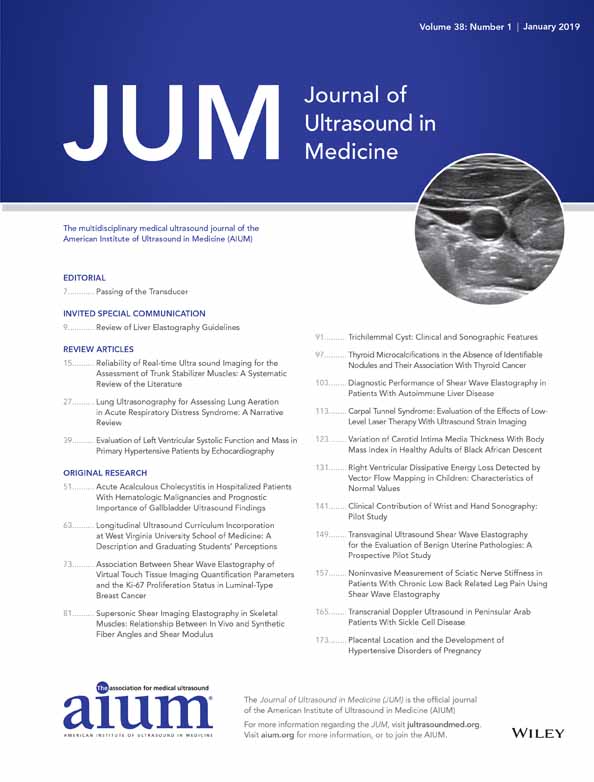Diagnostic Performance of Shear Wave Elastography in Patients With Autoimmune Liver Disease
Abstract
Objectives
To assess performance of shear wave elastography for evaluation of fibrosis and the histologic stage in patients with autoimmune liver disease (ALD) and to validate previously established advanced fibrosis cutoff values in this cohort.
Methods
Shear wave elastography was performed on patients with ALD with an Aixplorer ultrasound system (SuperSonic Imagine, Aix-en-Provence, France) using an SC6-1 transducer. The median estimated tissue Young modulus was calculated from sets of 8 to 10 elastograms. A blinded, subspecialty-trained pathologist reviewed biopsy specimens. The METAVIR classification was used to stage liver fibrosis and necroinflammation. Steatosis was graded from 0 to 4+. The Kendall τ-b correlation test was performed to identify the correlation between the estimated tissue Young modulus and fibrosis, steatosis, and the necroinflammatory score. The Spearman correlation test was performed to identify the correlation between the estimated tissue Young modulus and clinical data. The diagnostic performance of shear wave elastography for differentiating METAVIR stage F2 or higher from F0 and F1 fibrosis was evaluated by a receiver operating characteristic (ROC) curve analysis.
Results
Fifty-one patients with ALD were analyzed. The estimated tissue Young modulus was positively correlated with the fibrosis stage and necroinflammation score (r = 0.386; P < .001; r = 0.338; P = .002, respectively) but not steatosis (r = −0.091; P = .527). Serum aspartate aminotransferase, alanine aminotransferase, and total bilirubin values were positively correlated with the estimated tissue Young modulus (r = 0.501; P < .001; r = 0.44; P = .001; r = 0.291; P = .038). The serum albumin value was negatively correlated (r = −0.309; P = .033). The area under the ROC curve was 0.781 (95% confidence interval, 0.641–0.921) for distinguishing F2 or greater fibrosis from F0 and F1 fibrosis. Based on the ROC curve, an optimal cutoff value of 9.15 kPa was identified (sensitivity, 83.3%; specificity, 72.7%).
Conclusions
Shear wave elastography is a novel noninvasive adjunct to liver biopsy in evaluation and staging of patients with ALD, showing the potential for serial evaluations of disease progression and treatment responses.




